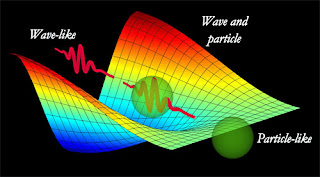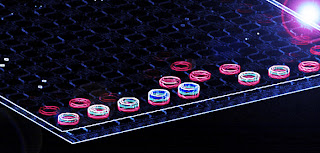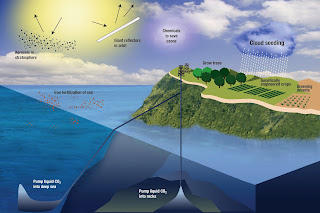 |
| Source: AAAS (see #9) |
- Neutrino Mass
- Shor's Algorithm
- Accelerating universe
- Extrasolar planets
- Higgs Boson
- Quantum Error Correction
- Topological Insulators (TI)
- AdS/CFT
- Bose-Einstein Condensate
- Quantum Teleportation
Neutrino Mass - surprisingly, neutrinos have a nonzero mass, which provides a window into particle physics beyond the standard model. THE STANDARD MODEL has been getting a lot of attention recently. This is well deserved in my opinion, considering that the vast majority of its predictions have come true, most of which were made by the end of the 1960s. Last year’s discovery of the Higgs Boson is the feather in its cap.
Shor's Algorithm - a quantum computer can factor N=1433301577 into 37811*37907 exponentially faster than a classical computer. This result from Peter Shor in 1994 is near and dear to our quantum hearts. It opened the floodgates showing that there are tasks a quantum computer could perform exponentially faster than a classical computer.
Accelerating universe - the universe is expanding, and the rate of this expansion is increasing. This result has been the source of an incredible number of misconceptions. First, how do we know this is happening? In the 1920s astronomers discovered that some of the really faint ‘stars’ that we see in the night sky are actually distant galaxies. Shortly thereafter, it was discovered that these galaxies are actually moving away from us, and away from each other. The question becomes: how did this happen?
Extrasolar planets - over the past two decades, we have detected ~1000 planets outside of our own solar system. As a prerequisite for finding extrasolar life–unless they find us first–we need to discover candidate homes.
Higgs Boson - The Higgs “field” permeates all of space; excitations in this field are interpreted as particles (Higgs bosons); these particles give other particles mass.
Quantum Error Correction - we want to protect quantum information from noise. We also face this challenge with classical computers. It also turns out that our enemy is formidable: we are battling decoherence. One way to think about decoherence is that every quantum system interacts with its environment, creating entanglement between the two – since we can’t control the environment (it both large and unknown), we lost control of our quantum system.
Topological Insulators (TI) - we’ve known for a long time that solids, liquids, gases and plasmas aren’t the only phases of matter; but only recently, we’ve unexpectedly discovered a huge new class of phases. Before topological phases, we classified phases based upon their local symmetries. In the early 1980s, experimentalists discovered quantum hall systems, which were the first materials whose ground states couldn’t be differentiated by only using a local description. The ‘phases of matter can’ had a few dents in it, but the lid was blown sky-high when topological Insulators were discovered in 2006. These materials have bizarre properties; they provide the foundation for a multitude of cousin systems; they are shedding light on questions from fundamental physics; and they will probably be widely utilized in the electronics of the 21st century.
AdS/CFT - AdS/CFT, which sometimes gets called the holographic principle, is basically a mathematical toolkit which says that in certain situations, there is an exact correspondence between gravity problems in n+1-dimensions and strongly correlated electron systems in n-dimensions.
Bose-Einstein Condensate - One of the original BEC experiments involved cooling thousands of Rubidium atoms to extremely low temperatures (a few nanokelvin above absolute zero), at which point their behavior is described by quantum mechanics. The Rubidium atoms behave as predicted, where the thousands of atoms coalesce into a very small area.
Quantum Teleportation - Why is this amazing? Well, teleportation would certainly be amazing, but that’s a bit of a misnomer, and a point I tried to clarify in my posts. Quantum teleportation IS NOT an all-purpose teleportation protocol. But it is incredibly awesome, and will undoubtedly have major technological significance someday. Basically, it’s easy to send photons all over the universe (we are very good at building and operating lasers), but it’s very hard to send more exotic forms of matter, especially when the matter is supposed to stay in a specific quantum state. Quantum teleportation allows us to first spread entangled matter throughout space. Then, at a later time, we can exploit this resource to move delicate quantum states to the location of our entangled matter.
Quantum Frontiers:
The 10 biggest breakthroughs in physics over the past 25 years according to us














